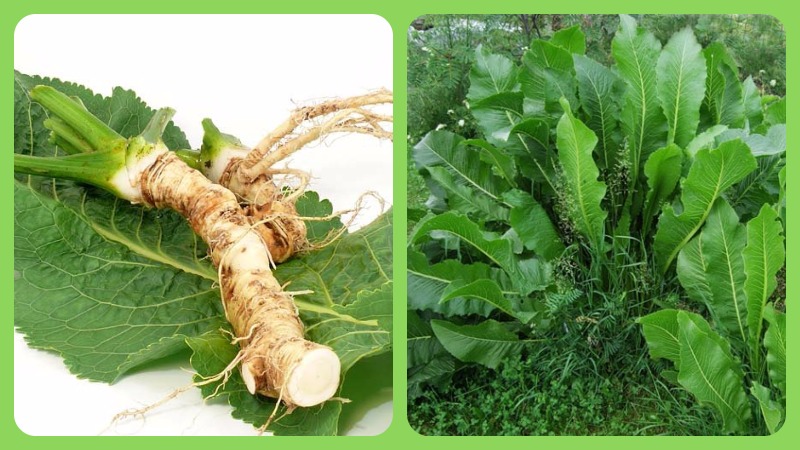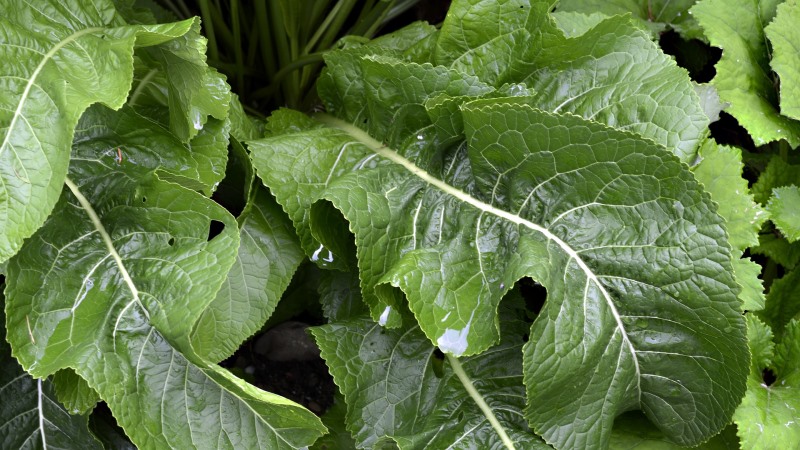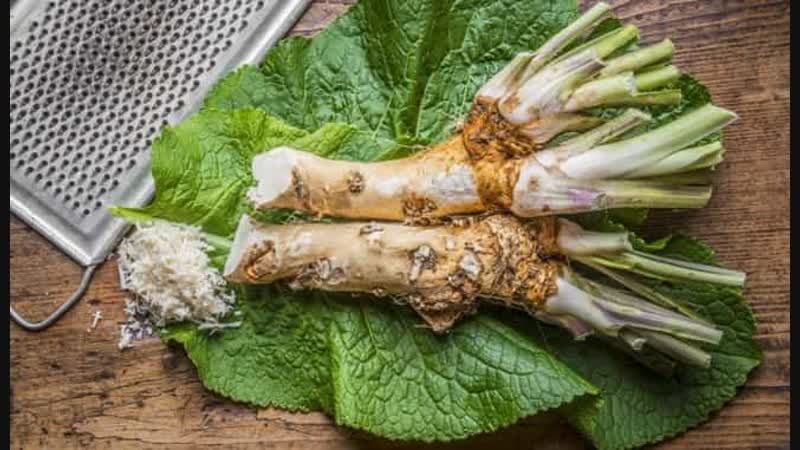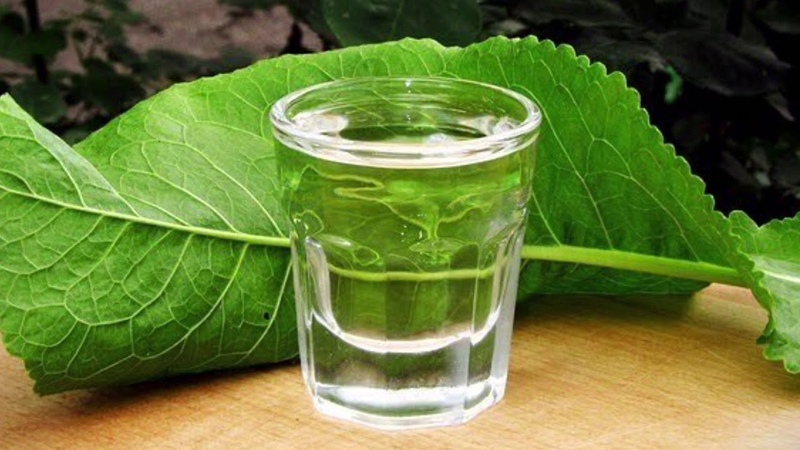Uses of horseradish leaves and their health and beauty benefits
Horseradish is widely used in cooking, but for many summer residents this plant is a vicious weed, which they ruthlessly remove from the site. And they do it completely in vain. The leaves of this plant have medicinal properties and are actively used in cosmetology and folk medicine.
The content of the article
How horseradish leaves are useful

The composition of the greenery of this plant includes phytoncides. These substances have antimicrobial effect, which is preserved even in dried leaves.
The culture is used as an aid for many health problems:
- removes salts, toxins and heavy metals from tissues;
- eliminates joint pain and promotes the restoration of cartilage tissue;
- fresh leaves improve appetite and stimulate digestion;
- infusions and decoctions have a beneficial effect on the respiratory system - they are used in the treatment of cough, sore throat and sinusitis;
- regular consumption of foods with this plant helps to normalize blood cholesterol levels and prevents atherosclerosis;
- fresh leaves are used as compresses for severe headaches;
- crushed greens are used in cosmetology to nourish and rejuvenate the skin and stimulate hair growth.
Composition and properties

The benefits of leaves horseradish for the body is explained by their rich chemical composition.
Reference! Greens contain almost all the vitamins and minerals needed by the human body.
100 g contains:
- 9.4 g protein;
- 1.4 g of fat;
- 6.2 g of carbohydrates.
The composition of greens includes the following vitamins and minerals (per 100 g):
- vitamin PP - 4.6 mg;
- vitamin B9 (folic acid) - 40 mcg;
- vitamin B6 (pyridoxine) - 1.2 mg;
- vitamin B5 (pantothenic acid) - 0.13 mg;
- vitamin B2 (riboflavin) - 0.66 mg;
- vitamin B1 (thiamine) - 0.26 mg;
- vitamin C (ascorbic acid) - 51.7 mg;
- potassium - 337 mg;
- calcium - 185 mg;
- magnesium - 147 mg;
- phosphorus - 112 mg;
- sodium - 9 mg;
- iron - 4 mg;
- manganese - 1.06 mg;
- zinc - 0.6 mg;
- copper - 0.11 μg;
- selenium - 0.9 mcg.
Not only fresh and dried leaves, but also horseradish roots have useful properties. Juice is pressed from fresh raw materials. It is used to improve appetite and digestive organs. Fresh leaves also have analgesic and anti-inflammatory effects, therefore they are often used in the treatment of sciatica.
Dried raw materials are ground into powder and infusions are prepared on its basis for the treatment of rheumatism and throat diseases.
Healing effect

The healing properties of horseradish leaves are primarily expressed in their ability to prevent the deposition of salts. Regular consumption of alcoholic tincture helps to avoid joint pain.
The plant is also useful for food. Once in the stomach, horseradish stimulates the production of enzymes and gastric juice. It improves appetite and normalizes the digestive system.
In addition, the culture is considered a natural antibiotic. The substances that make up it destroy bacteria and fungi, so the horseradish root and leaves are added to winter preparations to extend the shelf life.
What diseases does it help
Fresh horseradish leaves, as well as infusions, decoctions and compresses based on them, help against many diseases:
- reduce cholesterol levels in atherosclerosis;
- prevent the deposition of salts in osteochondrosis and the destruction of cartilaginous tissue in osteoporosis;
- have anti-inflammatory effects;
- used in the treatment of hepatitis;
- when taken orally, effectively relieve headaches, and as compresses - pain in the cervical, thoracic and lumbar spine;
- used to gargle with sore throat, to treat sinusitis and cough.
How they are used in cooking

Saturated sharp taste of horseradish found use in cooking. Fresh leaves and roots are often used in canning and pickling. Sauces are also prepared from root vegetables, added to salads and vegetables when pickling.
In Russian cuisine, "hrenoder" ("hrenovina") is a traditional addition to fried meat and jelly. Young leaves are added to soups and salads. Milled dried greens are used as a seasoning for meat, poultry and vegetable dishes.
Application in traditional medicine
In folk medicine, there are several uses for this vegetable. Tinctures and rubbing are prepared from it, and young leaves are used for compresses.
Compress
Herbal lotions are used to relieve joint pain:
- Fresh leaves are ground into gruel, mixed with a tablespoon of lemon juice and rubbed into the sore joint several times a day.
- To relieve inflammation, young leaves are applied to the sore joint and left overnight.
- A compress of horseradish leaves and apples, minced and mixed in equal proportions, will help relieve pain and reduce inflammation.
It is interesting:
Step-by-step instructions for planting horseradish in the fall for beginner gardeners
What are the varieties of horseradish and how to choose the best
Rubbing
Horseradish leaf rubbing is used to treat knee arthrosis. Application options:
- Pour chopped greens with hot water and bring to a boil.
- Gauze is moistened in the cooled liquid, a young horseradish leaf is spread on it and applied to the affected joint.
- In winter, dry leaves are used to prepare the grind. For 600 ml of water, 25 g of raw materials are needed.
- It relieves inflammation by rubbing horseradish, turnip and radish greens. The components are taken in equal proportions and ground in a blender. The resulting gruel is gently rubbed into the sore joint.
Tincture

Horseradish leaf tincture is a universal medicine. Outwardly, it is used for rubbing, and inwardly - to eliminate inflammatory processes in the throat and digestive organs.
Prepare the medicine like this:
- 5-6 large horseradish leaves are crushed, placed in a jar and filled with 500 ml of vodka or alcohol.
- The container is covered with a lid and insisted in the refrigerator for a week.
- Before use, filter and drink a tablespoon three times a day 30 minutes before meals.
If you add a little honey or lemon juice to the tincture, it will serve as an effective remedy in the fight against colds and coughs.
Use in cosmetology for the skin

In cosmetology, horseradish leaves are used to eliminate skin problems. Medical and prophylactic masks are prepared from them.
Note! To whiten the skin and eliminate age spots, a decoction of horseradish root is mixed with juice from fresh leaves in equal proportions. The resulting gruel is diluted in half with boiled water and wiped the face twice a day.
Mask recipes:
- To tighten pores and eliminate skin laxity: 1 tsp. gruel from the leaves is mixed with 2 tsp. grated apple. Add 1 tsp. honey and apply the mixture on the face for 10 minutes.
- For the treatment of acne: after washing with warm water, a gruel from the leaves is applied to the face, left for 10-15 minutes. If there is a burning sensation, the mask is washed off earlier.
- For rejuvenation: horseradish root is passed through a meat grinder, two leaves are crushed in a blender and 1 tbsp. l. sour cream. The gruel is applied to the face with a thin layer and left for 15 minutes. Wash off with a cotton pad dipped in warm milk, and after 5 minutes wash with warm water.
For hair
The rich chemical composition of horseradish leaves has a beneficial effect on the condition of the hair. To strengthen hair follicles and prevent hair loss, prepare the following mask:
- A tablespoon of fresh juice from the leaves is mixed with 1 tsp. castor and 0.5 tsp. burdock oil.
- The liquid is stirred, add 1 tbsp. l. cornstarch and 1 tsp. cognac.
- The resulting mixture is applied to the roots of clean hair, covered with a film, wrapped in a towel and left for an hour, after which it is washed off with shampoo.
This mask enhances the flow of blood to the hair follicles, stimulates their growth and eliminates dandruff.
It is interesting:
Why is sauerkraut juice useful for the face and how to prepare various masks with it
Slimming
Horseradish leaves contain the enzyme myrosin. They activate metabolism and reduce fat accumulation.
Slimming balm is prepared from 100 g of chopped root mixed with 3 tbsp. l. honey and the juice of half a lemon. All ingredients are mixed and taken twice a day, a teaspoon before meals. The product is stored in a container with a sealed lid for no more than three days.

Contraindications and possible harm
Despite the numerous useful properties of horseradish leaves, there are contraindications for products based on them. They are not recommended for people with acute gastritis, patients with gastric ulcer and serious kidney pathologies.
If you use horseradish too actively, the beneficial properties will turn into harm and negatively affect the state of the digestive system.
How to properly harvest horseradish leaves
Young horseradish leaves for cosmetic procedures are cut in early spring... For the preparation of traditional medicine, raw materials are harvested throughout the summer, but the maximum amount of nutrients accumulates in the leaves in the fall.
The aboveground part of the plants is carefully cut and hung in a well-ventilated room. In this state, they can be stored until the next season.
Conclusion
Horseradish leaves are not only a delicious seasoning, but also an effective medicine. Tinctures and rubbing relieve pain and inflammation, help to maintain youthfulness and beauty of the skin, and promote weight loss.